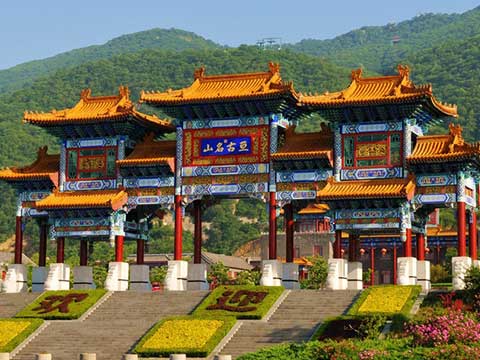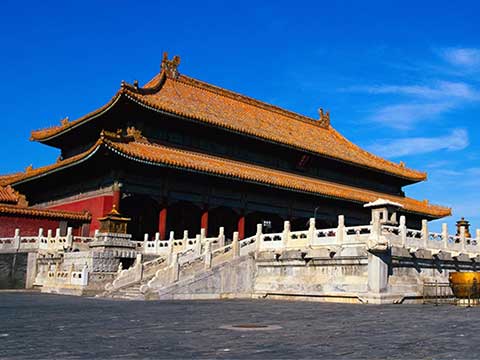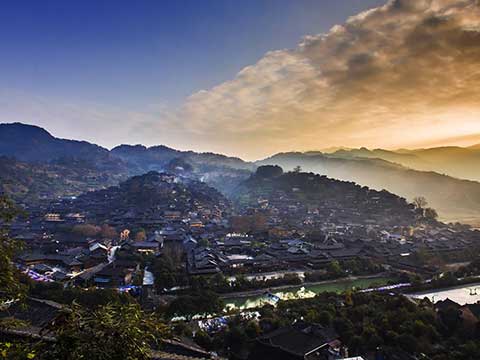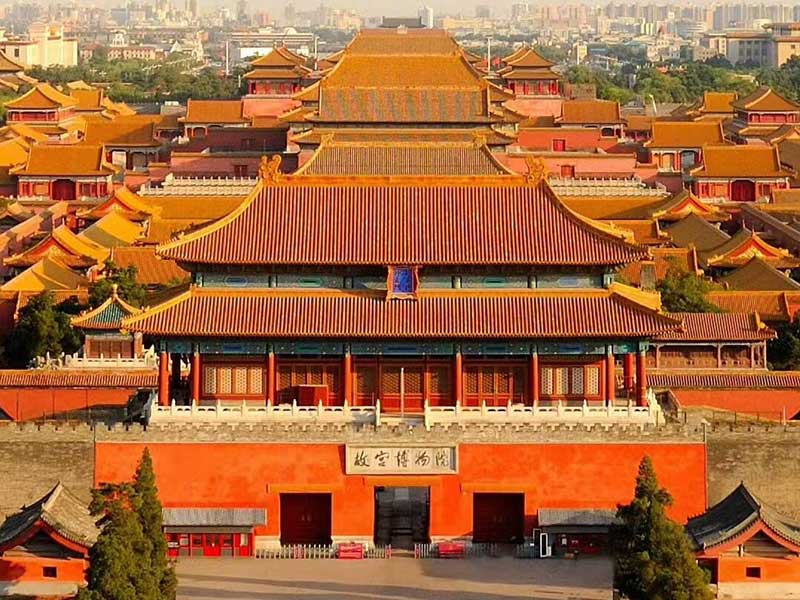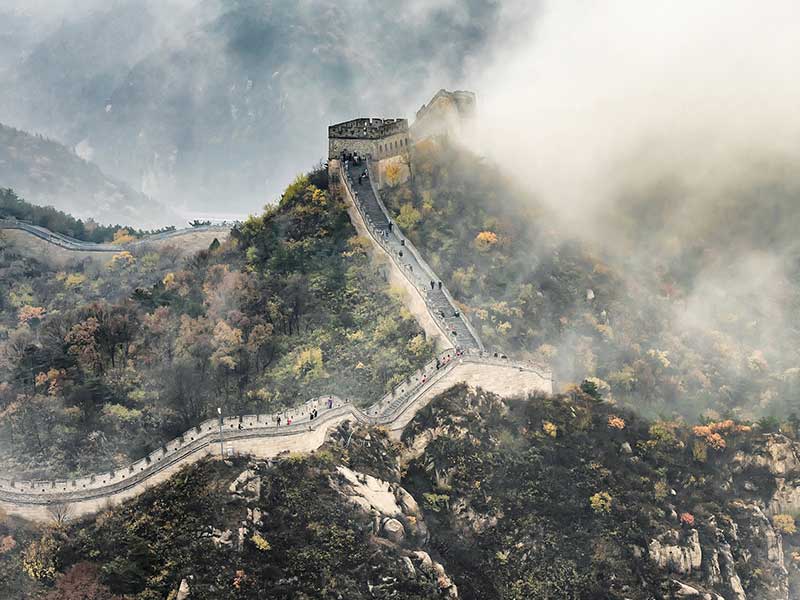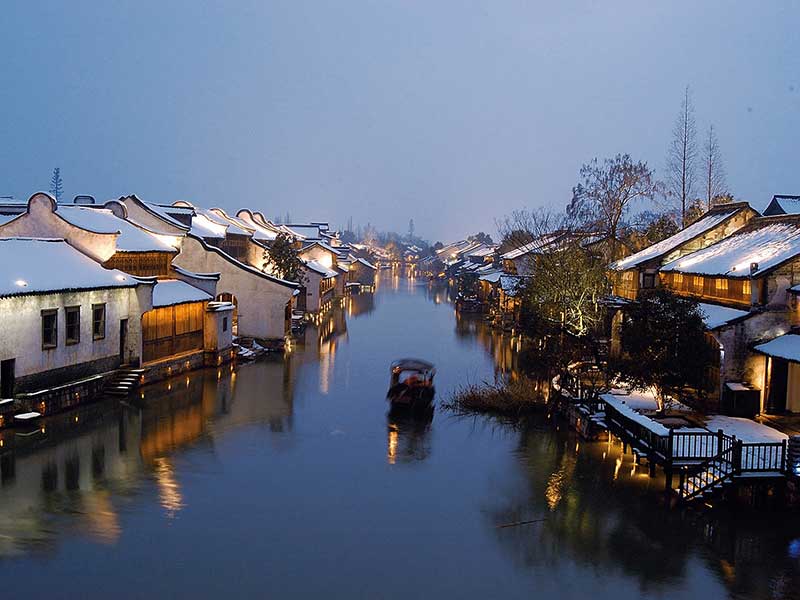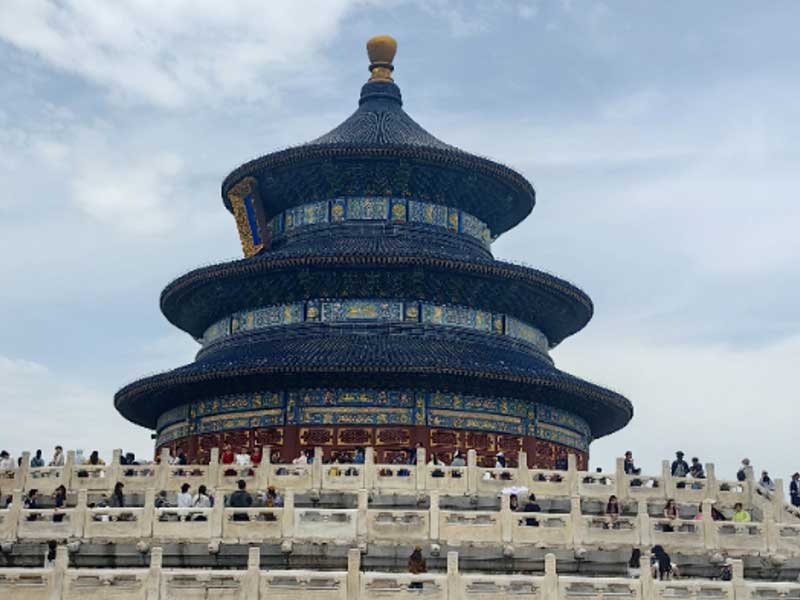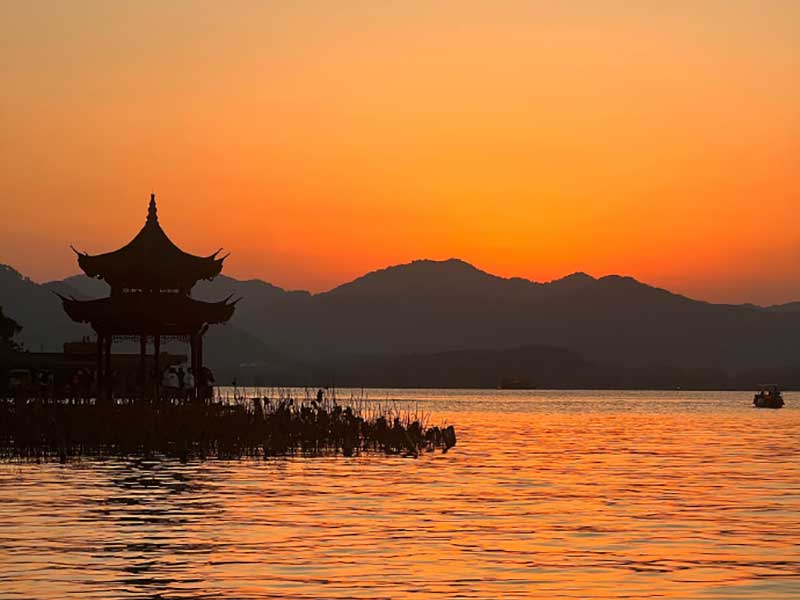Panshan is located in Jixian, Tianjin, and is a famous scenic area in North China. The scenery varies with the seasons, the mountains are steep and rugged, and there are numerous historical sites. It has long been a place of interest for literati, scholars, and pilgrims. Here, not only are there magnificent natural landscapes, but there is also a rich historical and cultural heritage. Every scenic spot seems to tell a story, and visitors often feel reluctant to leave.
As you enter Panshan, the first thing that catches the eye is the "Rusheng" site. There is a stone wall here with the words "Rusheng" carved on it, written by Ronglu, a military minister of the late Qing Dynasty. The phrase "Rusheng" means that one has entered the pure land of Buddhism, and it also gives a sense of tranquility and sacredness of Panshan. From here, following the stone steps upward, the mountain wind gently brushes against your face, and the sound of cypress trees rustles, as if welcoming the visitors.
Between the East and West Fucheng Ridges, there is a huge stone shaped like a golden ingot, known as "Yuanbao Stone." Not only is its shape unique, but it also carries a piece of history. It is said that a scholar from the ancient Miyun County was so captivated by the beauty of Panshan that he inscribed the lines "Here lie lofty mountains and steep ridges, strange stones and peculiar cypresses," which became a poetic description of Panshan's scenery. The nearby stone carving is a work by Fu Zengxiang, a famous scholar of the late Qing Dynasty. He once traveled with several scholars to Panshan and left a three-volume work titled "Special Edition of a Tour of Panshan," which is a precious source of information for studying the history of Panshan.
Continuing along the mountain path, you will soon come across the "Welcome Pine." This pine tree is over 400 to 600 years old, with a tall and upright shape, and its branches spread out gracefully, as if greeting every visitor. It is not only a symbol of Panshan but also a testament to the magic and wonder of nature.
At a higher elevation, there is an ancient temple called Tiancheng Temple. It was built in the Tang Dynasty and has been renovated through the Liao, Ming, and Qing dynasties, making it a significant attraction in the Panshan scenic area. In front of the temple, there are two tall ginkgo trees, over 800 years old, with thick trunks and lush foliage, prompting one to admire the passage of time. Inside the temple, there is the "Guanjiang Yizhan" pavilion, inscribed by Emperor Qianlong. Standing in the pavilion, you can overlook the entire Panshan, with its mountain ranges rising and falling, and clouds swirling around, creating a magnificent view.
The five peaks of Panshan, also known as "Dong Wutai Mountains," are a hallmark of the scenic area. Among them, Ziguai Peak is the central peak, Zilai Peak is the northern peak, Jiu Hua Peak is the eastern peak, Wujian Peak is the western peak, and Xianshi Peak is the southern peak. Each peak has its unique appearance, and Panshan has thus become a sacred place of Buddhism, attracting emperors and generals throughout history to meditate and pray.
Deep within Panshan, there is a place rich in legends—Shenniu Fudi. Here, the rocks are rugged, the cypress breeze is refreshing, and there are many stories about the mythical ox. Stones such as Shenniu Stone, Yundong Stone, and Ningshou Stone are scattered throughout the mountains, complementing the cypresses, and creating a natural painting that seems to transport one into a scene of beauty.
The pagoda forest of Panshan is located to the south of Wansong Temple, consisting of 99 pagodas of monks from different dynasties. Each pagoda has a unique shape and exquisite carvings, making it a notable highlight of the ancient sites in Panshan. Wansong Temple, the largest temple in Panshan, was originally called Li Jing An, named after the Tang Dynasty general Li Jing, who once lived here. Today, the ancient temple still echoes with the sound of the bell, and the ancient pagodas stand tall, though not as lush with cypresses as its name suggests, it remains solemn and sacred.
At the highest point of Panshan is Hangyue Peak, with an altitude of 864.4 meters. It is the summit of Panshan, with a steep and rugged landscape. On the eastern cliff wall, the words "Five Feet from Heaven" are carved, leaving a profound sense of reverence. The stone carving "Viewing All Mountains from a Single Peak" also evokes a sense of grandeur and boldness when looking out from a high vantage point.
The beauty of Panshan is not only in its natural scenery, but also in the history and culture it carries. Every step along the mountain path and every ancient site evokes a sense of the mountain's elegance and depth. Whether it's the spring rain and flowers, or the misty clouds at dusk, they all leave visitors entranced and in awe.

